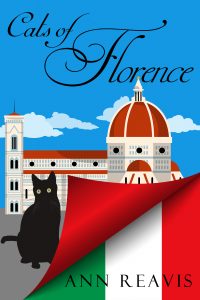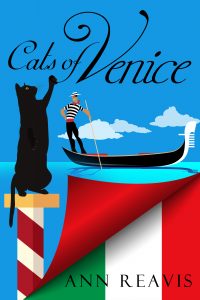Shakespeare’s Shylock declared that the cats of Venice were “both necessary and harmless.” Venetians believe that cats helped save the city from the devastating plague of 1348 by killing diseased rats. However, from time to time the municipality has tried to reduce the teeming feline population. Each time the citizenry has been up in arms in protest. In 1960 there were over 12,000 stray cats in Venice. The cat ladies, known as gattare, provided food and water to colonies located in almost every neighborhood in the city.
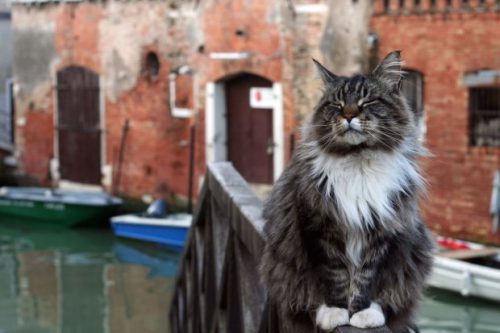
Largely due to the efforts of an organization, oddly named Dingo, the number has been reduced to 2,000 without killing a single healthy cat. Founded in 1965, Dingo was started by British-born Helena Sanders and Venetian Elena Scarpabolla as a cat and dog rescue society. (Dingo was the name of the first rescued dog.)
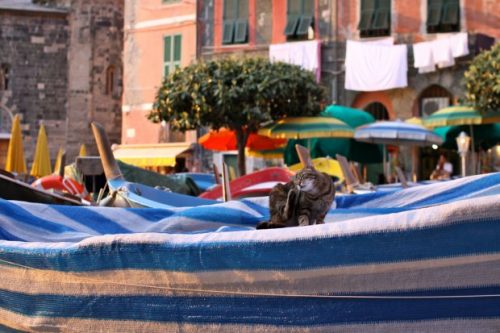
It took Dingo 20 years, but finally Venetian authorities gave them a designated space, a gattile or cattery, on the abandoned island of San Clemente, an ancient pilgrimage site that in the 19th century served as an insane asylum for women and was finally closed down after World War II. Imposing 19th-century buildings were still intact, as was an exquisite Baroque church, though it was stripped of its most precious art works by thieves when the island was uninhabited and unguarded. The cat sanctuary brought people to the island again.
But in 2005, Isola San Clemente was sold for redevelopment as a luxury hotel and resort. Almost 250 cats (stray dogs were not part of the mandate by this time) were transported to Malamocco, a fishing village on the long sandbar that is the Lido of Venice.
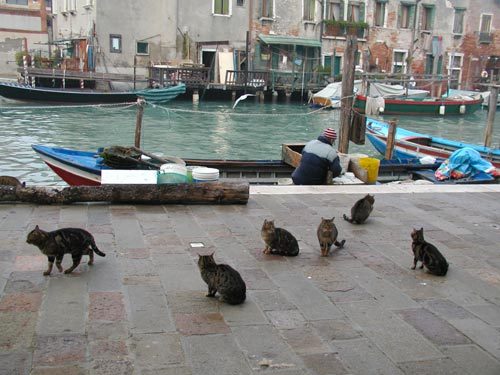
Dingo is now part of the Anglo Italian Society for the Protection of Animals, a British based charity which raises funds worldwide for animal welfare organizations in Italy. AISPA was started in 1952 and has branches all over Italy. AISPA is concerned the welfare of all kinds of animals, from cats and dogs to livestock and circus animals.
The gattile is housed in a small group of buildings in Malamocco. There are cat dormitories with individual cages, a surgery, and a series of outdoor enclosures where most of the cats hang out. There are also quarantine huts and a convalescence ward, for short- and long-term care of the injured and ailing residents. The farthest building houses the isolation ward for cats suffering from infectious illnesses like feline immunodeficiency virus (FIV) and panleukopenia (feline distemper) and a maternity ward for those about to give birth.
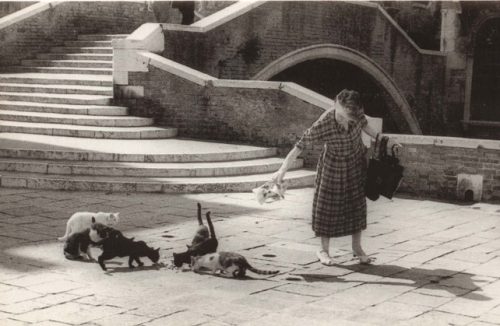
There is an ever expanding and contracting population of about 200 cats. Unwanted, sick or stray cats are brought to Dingo, either by Dingo volunteers or Venetian residents. Each new resident is given a medical exam and a determination is made whether they are lost, abandoned or feral. When its needs have been assessed, it joins the colony, some only for a short while. The gattile has an active adoption program and most of the captured feral cats are returned to their original colonies throughout Venice once they have been spayed or neutered. Unlike the U.S., where strays may be euthanized, Italy has laws to protect animals, wanted or unwanted. Most cities have TNR programs to trap, neuter and release feral cats. Venice was the first Italian city to pass an animal rights act, in 1987 (adopted nationally in 1991), and it guarantees stray cats an area to live in freedom.
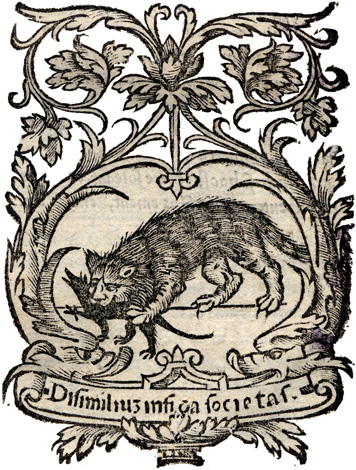
On Robin Saikis’s website TheVeniceLido.com one can find this interesting snippet of history: “In Gaetano Zompini’s 1789 book about Venetian street traders we learn about knife-sharpeners, candle-sellers and wig-makers, but there is another intriguing trade, that of the castragatti, the cat-neuterers. The cat population of Venice had always been a problem but Venetians, as animal lovers, were always ready to try and compromise with their feline friends: cats kill rats, rats spread plague, so neutering the toms would have seemed a good way of keeping a useful ally under control.”
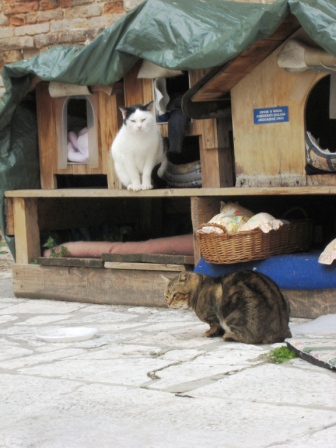
Dingo also maintains some kitty condos in various neighborhoods in Venice for the free feral colonies. Londoner Jeff Cotton keeps track of the colonies on his website FictionalCities.
